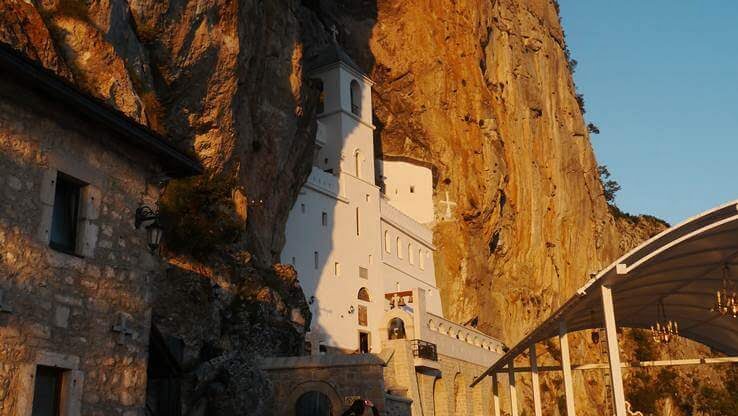Ancient nunnery Our Lady of Mercy is another monastery that graces the Bay of Kotor, not far away from Tivat. It is the smallest island out of three in the archipelago, including the Saint Mark and Island of Flowers. The monastery has a household, sleeping cells, beautiful garden as well as the church dedicated to Blessed Virgin Mary.
The whole complex of this female monastery is surrounded by 1.5 m wall, being that this monastery is also a legitimate home to nuns. Our Lady of Mercy was founded in 15th, but since 16th it belonged to the Franciscan order, but somewhere in the beginning of the 19th century it was passed to Kotor bishop and Catholic priests.
This monastery has an interesting showpiece, namely a wooden representation of the Virgin Mary, made in 14th century. It was created by one of the hermit monks who founded the monastery of Celestians. The depiction of Virgin Mary is unique because it presents her in a highly unusual way, not to mention – unusual position. This statue is Virgin Mary presented as a sitting pregnant woman, holding her tummy in her hands.
Of course, she is an eternal symbol of motherhood here, but, nevertheless, highly atypical depiction in Christianity. Aside from this statue, the island with the ancient Montenegro monastery complex, church and belfries is one of the must – see attractions of Tivat Bay.
It is a shining example of medieval architecture so visitors, especially those accommodated at Porto Montenegro, can easily reach it bay boat or a yacht charter regularly departing from Porto’s marina.
As you’ve probably concluded by now, territory of Montenegro is covered by a large number of monasteries, mostly belonging to the Montenegrin Orthodox Church, as the bigger portion of population is of Orthodox denomination. The Catholic churches are located mainly in the littoral area of the country, mostly because of the past Venetian dominion on the coast.
Being that there are more than 50 different monasteries in our small country, we can say that every monastery Montenegro can offer is special in it’s own way – whether due to their magnificent history, incredible fresco paintings, iconography, or simply because of the stunning Montenegro nature they are surrounded by.
In any case, Montenegro monasteries are worth visiting, so of you have the time, try and visit the ones we just pictured for you, from the Byzantine period until modern times, with a spiritual power that will certainly find a way to enchant you.



